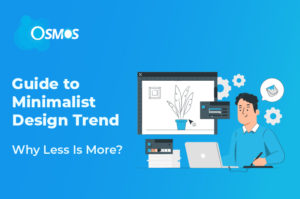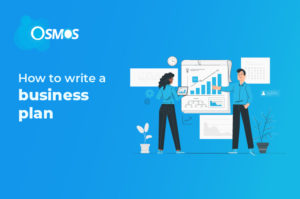Today having a website for your business is essential. More and more people are going online to find products and services that solve their problems. Especially now in the COVID-19 era, where most people get their information online.
The website is your home in the virtual world, and it needs to be compelling to attract prospects and customers. When designed with intention and purpose, your website can attract, engage, convert prospects to customers.
In the same way, faulty website design can drive away customers. An unappealing website can stain your credibility, risking being perceived as outdated, unprofessional.
Find out below the seven most common website designs and simple solutions to them.
1. Non-responsive website design
A responsive web design is a way of creating a website that optimizes the website on any device screens such as desktop, laptop, tablet, or smartphone.
A common mistake businesses make is ignoring how responsive the web design is in mobile devices such as smartphones and tablets. If your website is not compatible with smartphones, web visitors have a setback navigating and getting the information they want.
Moreover, Google created the mobile-first indexing, through which it ranks and indexes the mobile version of websites.
How to fix it?
Build your website using a mobile-first approach. Make sure elements are aligned and load perfectly on small devices. Then, continue and scale the components for larger screens.
2. Bad menu and website navigation
The website navigation menu allows web visitors to move among your website pages without frustrations. When the visitor has a hard time surfing your website, they click away and leave the website. You drive them off without having a chance to engage with your content.
The most common navigation mistakes in a website are:
- Placing menus in non-standard locations
- Using the same labeling as all other webs
- Having drop-down menus
- Including too many items in the menu bar
How to fix it?
Improve your website navigation by:
- Polishing your menu bar, leaving in it only essential pages you want the visitor to take action.
- Changing the color of the link when the visitor is on the page.
- Optimizing the menu bar for mobile devices.
3. Thin, fluffy content
People landed on your website to find a solution, not to read your fluff. They get confused by your content, eventually clicking away.
The content of your website can engage the visitors and move them across their buyer’s journey. When you have thin or fluffy content, you drive away and even make the prospects disinterested in your products or services.
Common content mispractices include:
- Creating duplicate either inside your website or copy/paste from another website
- Having no product or service page
- Listing multiple products or services on one page
- Writing fluffy and cheezy product descriptions
How to fix it?
To avoid thin content, make sure to write unique, valuable content that answers visitors’ questions. Optimize your content for SEO adding relevant keywords appropriately. Make sure to add one relevant keyword for a page to rank better for SEO.
4. Website without favicon
You, me, and almost everybody have a few tabs open in our browser. To know which link is which, we refer to the little logo on the browser tab. That is the favicon. Besides the browser, it shows in places like:
- Search bar,
- Bookmark menu,
- Toolbar, and
- Browser history.
A favicon, small as it is, has the opportunity to increase brand awareness and improve the perception of your brand.
How to fix it?
Resize your logo for favicon format and added in your website.
5. Slow loading speed
The internet has shortened our attention span. With it came our inability to wait for things to load on the internet.
If your website is taking longer than 4 seconds to load, it is slow. Some of the common reasons why your website speed is low are:
- Adding large pictures not optimized for the web
- Creating HTML/CSS animated files
- Having a lot of background pictures and textures
How to fix it?
Optimize the pictures before publishing them on your website. Usually, they are the leading cause of slow loading speed.
Add cache functionalities as they improve the performance of your website.
6. Too much pop-up
How many times you visited a website and left it irritated by disruptive pop-ups?
Same as you, no one wants to be distracted and annoyed by them. Some of the most common reason why pop-ups drive away the visitors are:
- Pop-ups block the view and disturb the navigation
- They distract the web visitors
- Pop-ups are perceived as suspicious and can hurt your brand reputation
- Pop-ups can look horrible if not optimized for mobile
When you create pop-ups intentionally, they have a high ROI. Their effectiveness is the main reason why businesses still use them.
How to fix it?
To create effective pop-ups, follow these tips:
- Be mindful and always offer value to the customer with that pop-up
- Design simple, decluttered pop-ups that don’t require too much of the reader’s time
- Make the “X” button visible
- Optimized the pop-up following Google’s rules for mobile
- Don’t include a pop-up on every page.
7. No 404 error page
It doesn’t matter how carefully designed and maintained your website is. At some point, the visitor will land in a broken link. The link will show the generic 404 error page. A page, nor the visitor nor the website owner, doesn’t like it.
But if you design a 404 error page, you have a chance to connect the visitor again to your website. It also shows the visitor that you care about them and are trying to solve their problem.
Having a designed 404 page also helps you rank better on SEO.
How to fix it?
Create a 404 page that matches the theme of your website. Add relevant links such as your homepage. Or add a search bar that allows the visitor to find the page they wanted to reach.







